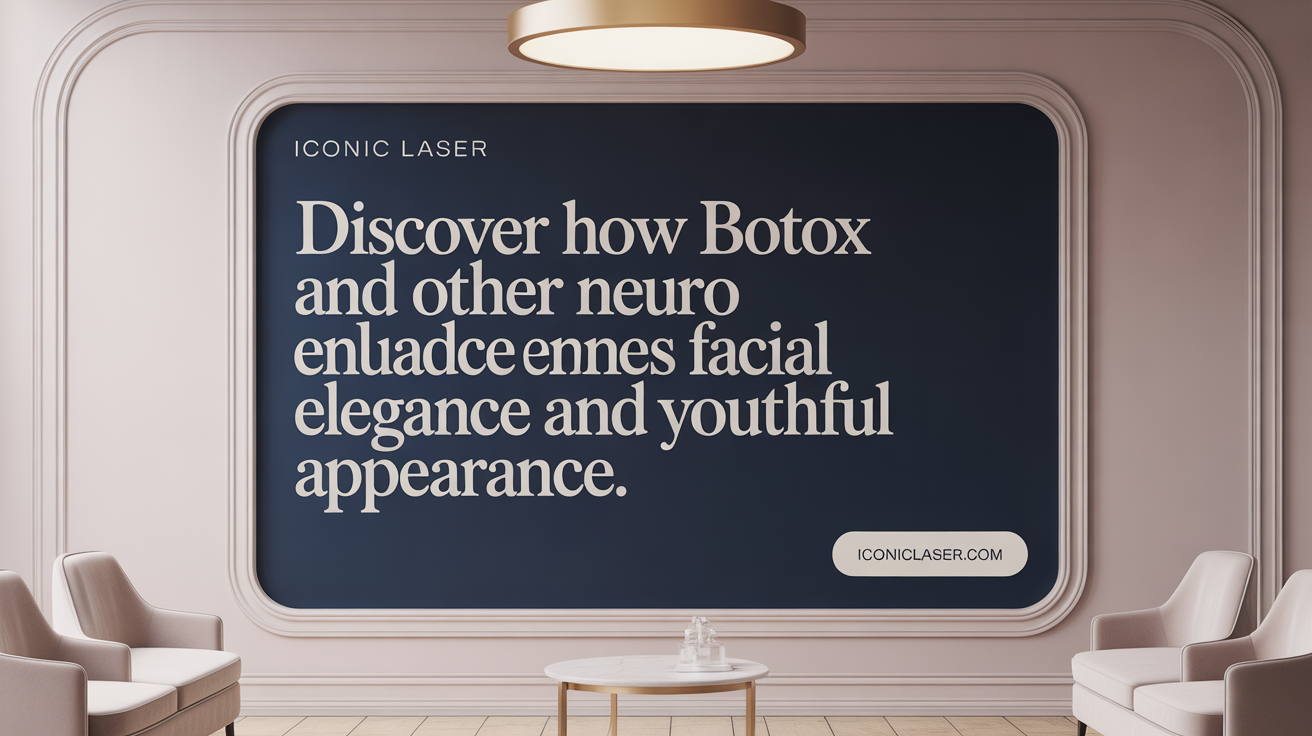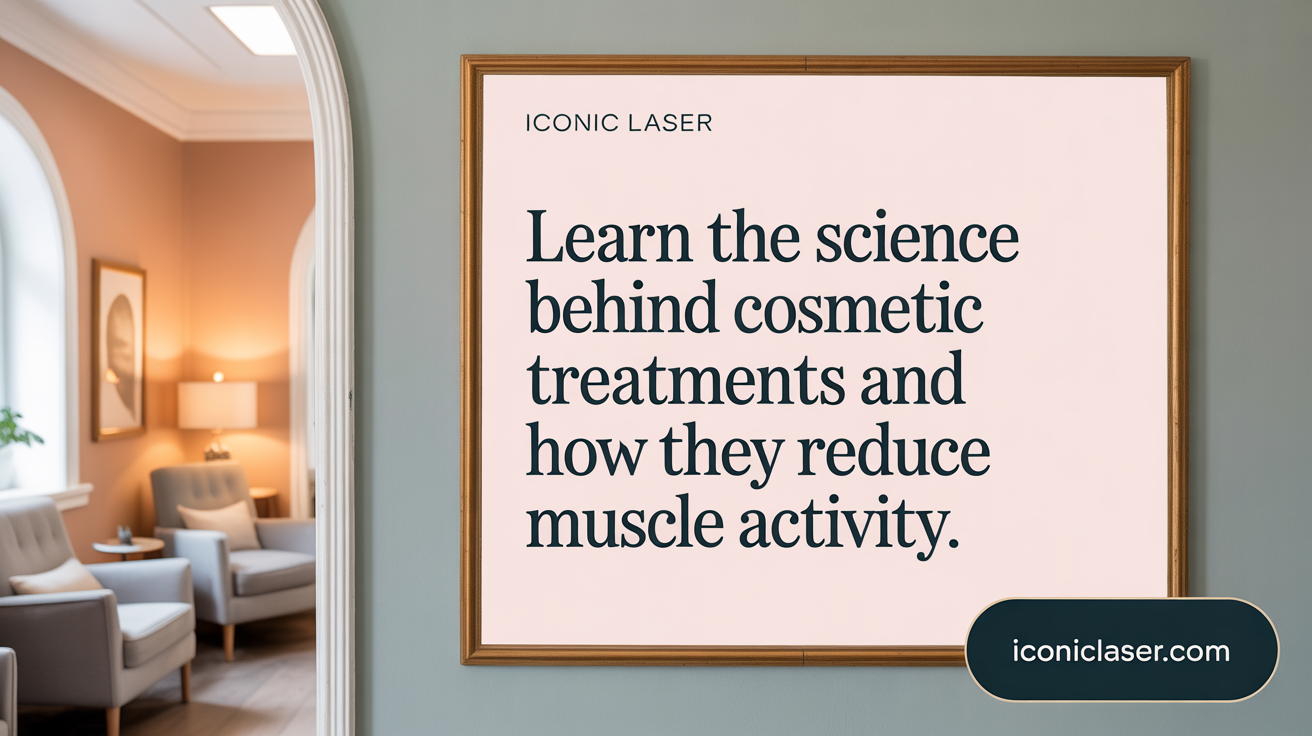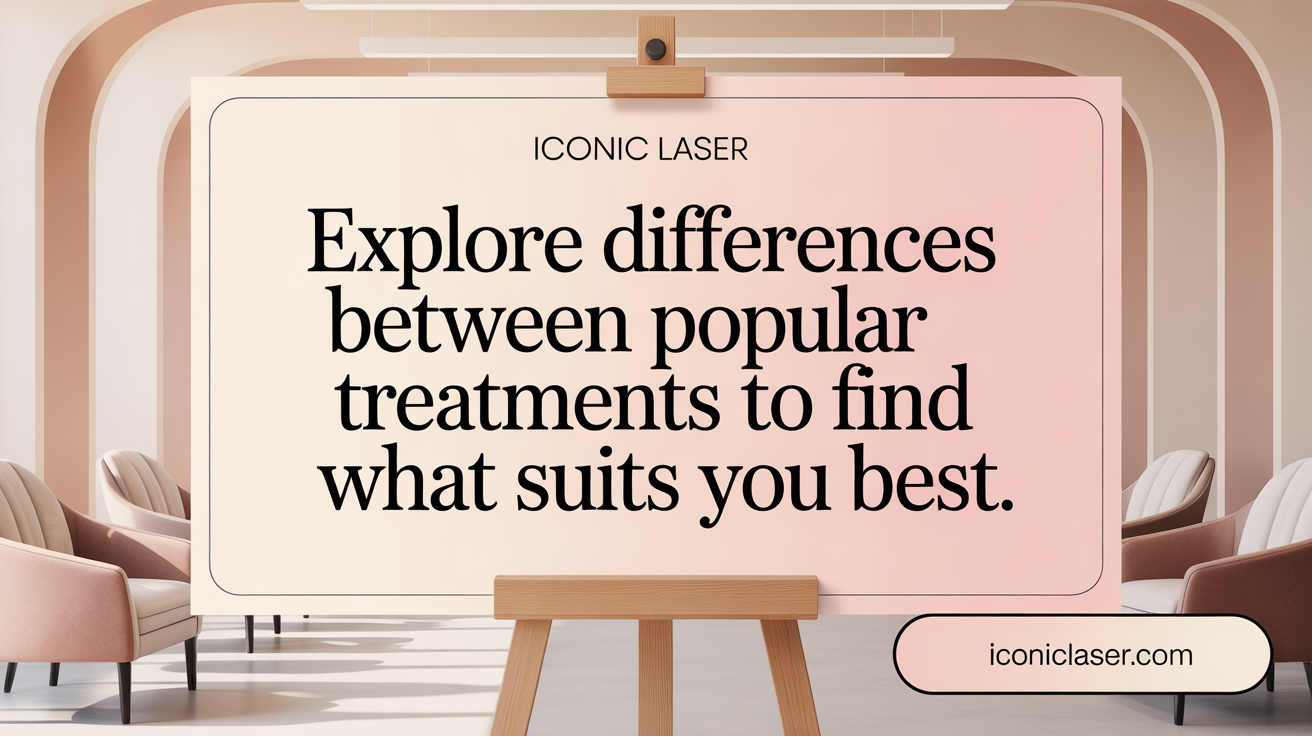Introduction to Wrinkle Relaxers and Botox
Wrinkle relaxers like Botox have become a popular non-surgical option to reduce the appearance of dynamic facial wrinkles and achieve a more youthful complexion. With a variety of products available, it’s essential to understand how these treatments work, their benefits, safety considerations, and what to expect before making an informed decision. This article provides a detailed overview answering common questions and clarifying misconceptions about wrinkle relaxers, including Botox and its alternatives.
What Are Wrinkle Relaxers and Botox?

What are wrinkle relaxers and Botox?
Wrinkle relaxers are non-invasive injectable treatments designed to soften and reduce the appearance of facial wrinkles and fine lines. They primarily work by relaxing muscles responsible for creating expression lines, such as frown lines, crow’s feet, and forehead wrinkles.
Botox, which is a brand name for botulinum toxin type A, is one of the most recognized and widely used wrinkle relaxers. It has been approved by the FDA since 1989 for both medical and cosmetic purposes. Botox works by blocking signals from nerves to muscles, causing the muscles to relax temporarily. When injected into targeted areas, it smooths out dynamic wrinkles that appear due to muscle movement.
Other brands similar to Botox include Dysport, Xeomin, Jeuveau, and Daxxify. These neuromodulators share the same basic mechanism but have differences in formulation, onset speed, and duration of effects. Most of these treatments typically last about 3 to 4 months, but Daxxify can provide longer-lasting results.
Aside from cosmetic benefits, neuromodulators are also used medically to treat various conditions such as migraines, excessive sweating (hyperhidrosis), muscle spasms, and eyelid twitching. Their ability to temporarily relax muscles makes them versatile for both aesthetic and therapeutic purposes.
How Do Wrinkle Relaxers Work?

How do wrinkle relaxers like Botox work to reduce wrinkles?
Wrinkle relaxers such as Botox are injected into specific facial muscles to temporarily weaken or relax them. They contain a purified form of botulinum toxin, which acts on nerve signals that tell muscles to contract. By disrupting this communication, the muscles cannot respond as strongly, leading to less movement in the targeted area.
The primary effect involves blocking the release of a neurotransmitter called acetylcholine. When acetylcholine release is inhibited, the muscle’s ability to contract diminishes. As a result, the skin above these muscles appears smoother and less wrinkled.
These treatments are especially effective on dynamic wrinkles—those caused by repetitive muscle movements like frowning or squinting. Since the muscles are relaxed, the skin's surface becomes temporarily more even.
Effects on acetylcholine neurotransmitter and muscle contractions
The key to how wrinkle relaxers work lies in their influence on acetylcholine. Normally, nerve cells release this neurotransmitter at the neuromuscular junction, prompting muscles to contract. When botulinum toxin is introduced, it prevents the release of acetylcholine, effectively paralyzing the muscle for a limited period.
This muscle weakening reduces the formation of wrinkles caused by muscle movement, helping skin look younger and more rested.
Onset and duration of results
Most patients notice the initial effects of Botox within 3 to 5 days after treatment. Full results typically appear within 10 to 14 days.
The muscle relaxation achieved by the toxin usually lasts between 3 and 6 months, depending on the individual’s age, skin condition, and treatment area.
To maintain the desired smoothness, repeat treatments are necessary every few months. Over time, some patients also experience a slight retraining of muscles, which can delay the formation of new wrinkles.
Target facial muscles and wrinkle types
Wrinkle relaxers target areas such as the glabellar lines (frown lines), horizontal forehead lines, and crow’s feet around the eyes. By relaxing the muscles involved in these expressions, the appearance of fine lines and deep wrinkles can be significantly reduced.
In addition, some treatments address specific issues like chin dimples, neck bands, and even help with facial slimming by reducing muscle volume.
Preventive use and muscle retraining effects
Regular use of wrinkle relaxers can serve a preventive purpose, preventing the deepening of existing lines and the formation of new ones. When muscles are relaxed over time, the skin is less frequently pulled into creases during facial expressions.
This muscle retraining can lead to longer-lasting results and a more natural, youthful look. It also highlights the importance of customized treatment plans designed by experienced professionals to optimize both aesthetic and functional outcomes.
Comparing Botox and Other Wrinkle Relaxers: Dysport, Xeomin, and More

What differences exist between various wrinkle relaxer brands such as Botox, Dysport, and Xeomin?
Botox, Dysport, and Xeomin are popular neuromodulators used to relax face muscles and reduce wrinkles caused by muscle movements. Despite sharing the same core function, they have several differences related to formulation, onset of action, effects, and longevity.
Botox, produced by Allergan, has been FDA-approved since 1989 and is widely used for treating frown lines, crow’s feet, and forehead wrinkles. Results from Botox typically appear within 7 to 10 days, with effects lasting approximately 3 to 4 months.
Dysport, another FDA-approved product, tends to have a quicker onset, often showing results within 3 to 5 days. It is formulated to spread more easily across larger areas such as the forehead, which can be advantageous when treating broader muscle groups.
Xeomin sets itself apart by having a ‘naked’ formulation, meaning it’s free of complexing proteins. This may lower the risk of developing resistance or allergic reactions, making it suitable for individuals with sensitivities.
In addition to these, Jeuveau (also called Newtox), approved in 2019, is designed for similar cosmetic uses as Botox, including treating glabellar lines. Its results also generally appear within a week, with a similar duration.
Choosing among these options depends on personal factors and medical advice. Considerations include how quickly you want to see results, whether spread of the product is beneficial, and individual sensitivities.
In summary, the main differences revolve around formulation components, how quickly effects appear, how wide the effects spread, and how long they last. Consulting a qualified provider helps determine the most suitable product for specific aesthetic goals.
Summary Table of Differences
| Product | Formulation | Onset of Effects | Duration of Results | Spread Characteristics | Notable Features |
|---|---|---|---|---|---|
| Botox | Contains complexing proteins, well-proven safety | 7–10 days | 3–4 months | Moderate, targeted areas | Established history, widely used |
| Dysport | More diluted, spreads more easily | 3–5 days | 3–4 months | Greater spread over large areas | Suitable for broader treatment zones |
| Xeomin | Pure form, without complexing proteins | 4–7 days | 3–4 months | Controlled, less spread | Suitable for sensitive patients |
| Jeuveau | Similar to Botox, designed for aesthetics | 7–10 days | 3–4 months | Similar to Botox | Approved for aesthetic treatments |
Understanding these differences helps patients and doctors choose the best neuromodulator tailored to personal needs, ensuring natural-looking results and safety.
Benefits, Safety, and Candidate Suitability for Wrinkle Relaxers

What are the benefits and expected effects of wrinkle relaxers and Botox treatments?
Wrinkle relaxers like Botox offer numerous cosmetic and medical advantages. Cosmetically, they effectively diminish the appearance of dynamic wrinkles—those caused by repetitive muscle movements—such as frown lines, crow’s feet around the eyes, and horizontal forehead lines. This results in a smoother, more youthful appearance. Medically, Botox also alleviates conditions like migraines, hyperhidrosis (excessive sweating), muscle spasms, and certain eye issues by blocking nerve signals to targeted muscles.
The treatment is minimally invasive and involves quick, small injections administered by qualified professionals. Results usually become noticeable within a few days—typically 3 to 5 days—and can last about 3 to 6 months. Regular treatments maintain the benefits over time. Overall, Botox not only enhances facial aesthetics but also provides relief from various medical conditions, fostering improved confidence and comfort.
What are the safety considerations and potential risks associated with wrinkle relaxers and Botox?
Botox and similar wrinkle relaxers are considered safe when administered by licensed and experienced healthcare providers. Nevertheless, potential side effects include mild reactions such as redness, swelling, bruising at the injection site, headaches, dry mouth, neck pain, or eye irritation.
In rare cases, improper injection techniques can cause unintended muscle weakness, asymmetry, or drooping eyelids. Patients with certain conditions—such as neuromuscular disorders, active skin infections, or those taking blood thinners—should inform their provider, as these factors may increase risks or reduce effectiveness.
Post-treatment care is crucial to minimize side effects. Patients are generally advised to avoid strenuous exercise, alcohol, or facial massages at the injection sites for about 4 hours after treatment, following the '4-hour rule'. Serious adverse events are exceedingly rare, but choosing a qualified, experienced practitioner helps ensure safety and optimal results.
Who are the ideal candidates for wrinkle relaxers and Botox, and what typical results can they expect?
The best candidates are healthy adults, often in their late twenties or older, who want to reduce or prevent the signs of aging caused by muscle movements. They usually seek a non-invasive way to soften lines, such as frown lines, crow’s feet, and forehead wrinkles.
Candidates should have good skin elasticity and no active skin infections, neuromuscular conditions, or allergies to the medication components. Pregnant or breastfeeding women are generally advised to postpone treatment.
Results typically appear within 3 to 7 days, with full effects visible around two weeks. The outcomes include smoother, more relaxed facial features with a natural appearance. The effects last approximately 3 to 6 months, and regular treatments can help maintain the results and prevent new wrinkles.
In summary, suitable candidates are motivated individuals desiring non-surgical facial rejuvenation, provided they consult experienced providers to ensure safety and achieve the best possible aesthetic and medical outcomes.
What to Expect During and After Your Wrinkle Relaxer Treatment
What should patients expect during and after wrinkle relaxer or Botox treatment?
When you receive a wrinkle relaxer or Botox treatment, the process involves small injections into targeted facial muscles. The injections are quick, generally taking less than 15 minutes, and cause minimal discomfort. Most patients describe a slight pinching or burning sensation at the injection sites.
Immediately after the procedure, there's typically no significant downtime. Patients can usually return to work or their daily activities right away. However, it is advised to avoid rubbing, massaging, or applying pressure to the treated areas for at least 24 hours. This helps prevent the toxin from spreading to unintended muscles, which could cause unwanted side effects.
Patients are often instructed to stay upright for at least four hours post-treatment and to avoid strenuous activities, hot yoga, saunas, or heavy exercise during the first 24 hours. These precautions help optimize the results and minimize side effects.
Visible effects usually start within 3 to 4 days, with full results developing by 10 to 14 days. The primary goal is the relaxation of facial muscles responsible for wrinkles, leading to a smoother, more youthful appearance.
Some temporary side effects may include minor redness, swelling, tenderness, bruising, and headaches. These are generally mild and resolve within a few hours to days.
Serious adverse reactions are rare when treatment is performed by a qualified healthcare professional. With proper administration, wrinkle relaxers like Botox can provide effective wrinkle reduction with minimal downtime.
Dispelling Common Myths and Understanding Medication Interactions
What are common myths or misconceptions about wrinkle relaxers and Botox?
A widespread misunderstanding about Botox and other wrinkle relaxers is that they cause cancer or lead to permanent paralysis. These beliefs are false; Botox is extensively studied and FDA-approved, with a proven safety record when administered by qualified professionals. Some people think Botox completely freezes the face, producing an unnatural, stiff expression. In reality, skilled practitioners inject just enough to relax muscles while maintaining natural facial movements, resulting in soft, natural-looking results. Another misconception is that Botox causes long-term muscle damage, but its effects are temporary, usually lasting three to six months, and side effects like mild bruising or swelling are temporary as well. Additionally, many assume Botox is only cosmetic, but it’s also effective for medical conditions such as migraines, excessive sweating (hyperhidrosis), and muscle spasticity. Overall, most myths arise from misinformation, but with proper medical guidance, Botox and other wrinkle relaxers are safe, effective, and versatile treatments.
Do muscle relaxers interfere with the effectiveness of Botox treatments?
Muscle relaxers, whether prescription medications or topical agents, can potentially affect the efficacy of Botox treatments because both aim to reduce muscle activity, albeit through different mechanisms. Using muscle relaxants alongside Botox might lead to an excessive weakening of muscles or reduced muscle contraction, which can diminish the appearance of wrinkles. In some cases, combining these treatments could increase side effects like muscle weakness or spread of toxin effects beyond the target area. Therefore, it’s crucial to inform your healthcare provider about any muscle relaxants you’re taking before Botox injections. Your provider can then adjust treatment plans accordingly to ensure optimal results. Monitoring and professional guidance help to prevent interactions and ensure that both medical and cosmetic goals are achieved safely.
Final Thoughts on Wrinkle Relaxers and Botox
Wrinkle relaxers such as Botox and its alternatives offer a safe, effective, and minimally invasive solution for reducing dynamic facial wrinkles and enhancing appearance. Understanding how these treatments work, their benefits, risks, and the differences between available products is crucial for anyone considering this option. Consulting with experienced, qualified providers ensures personalized care, realistic expectations, and optimal results. By dispelling myths and knowing what to expect throughout the treatment process, individuals can make informed decisions to confidently embrace wrinkle relaxers as a valuable tool in facial rejuvenation and overall wellbeing.
References
- Botox Wrinkle Relaxers: A Complete Guide - Scenic Dermatology
- What is the Difference Between Wrinkle Relaxers and Botox?
- Botox Injections: Treatment, Recovery & Side Effects - Cleveland Clinic
- Wrinkle Relaxers | Turn Back the Clock with Botox & Dysport
- Demystifying the Use of Wrinkle Relaxers in Anti-Aging
- Botox & Other Wrinkle Relaxers - Xeomin, Jeuveau, Dysport, Daxxify
- Botox injections - Mayo Clinic
- Explore The Differences Between Wrinkle Relaxers And Botox
- Botox Vs. Dysport: Battle of the Wrinkle Relaxers
